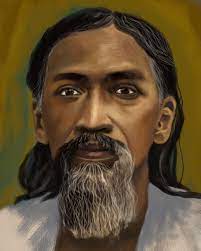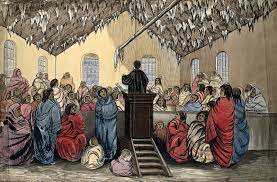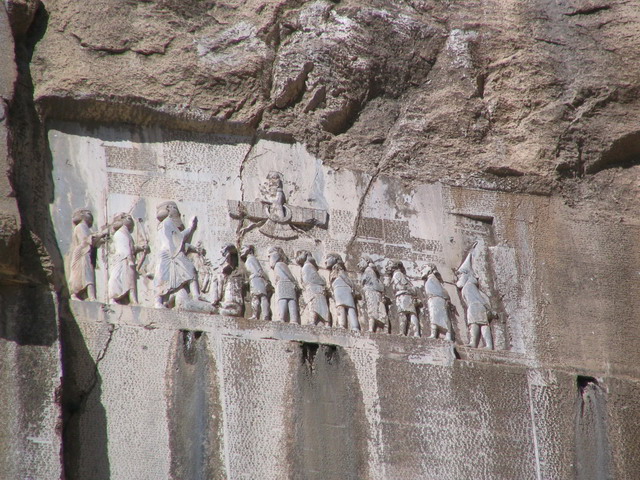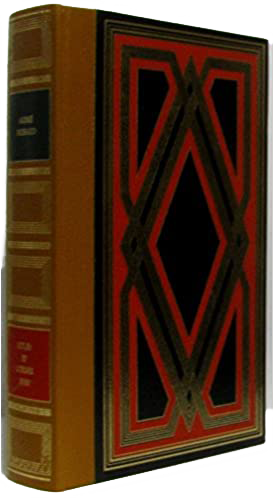I do not want to go into detail about those. That would take the reader too far. But I can’t pass over in silence two organisations which originated in South India: one, the Society of Theosophy in Adyar near Madras; the other, a community formed in Pondicherry around the late Bengali sage, Aurobindo Ghosh.
 The first is a vast international institution of subversion in the deepest sense of the word, as Guénon showed very well in his book Le Théosophisme, une fausse religion (a book now almost impossible to find). What it would like to pass off as ‘doctrine’ is a farrago of arbitrary constructions of the mind and of some notions and beliefs whose names—karma; transmigration of souls, etc.—are taken from the Hindu tradition. These notions and beliefs themselves are just as arbitrary, just as unorthodox, as the theories into which they enter—such, for example, as Leadbeater’s idea of the ‘group soul’ of animals; such, also, everything the Theosophists teach about their various ‘Masters’: Kuthumi, Rajkoski, and others. The illustrious Lokomanya Tilak, one of whose works I have quoted above, compared Annie Besant, President of the Theosophical Society until she died in 1933—and for a time President of the Indian National Congress—to the she-devil Putna, who was sent as nursemaid to the Child-God, Krishna, to kill him with her poisonous milk. Tilak hoped that, like the young God who, while assimilating the poison with impunity, finally killed Putna by draining her of all her substance, Hindu society would be able to defend itself, and confound those who try to seduce it with cleverly disguised untruths.
The first is a vast international institution of subversion in the deepest sense of the word, as Guénon showed very well in his book Le Théosophisme, une fausse religion (a book now almost impossible to find). What it would like to pass off as ‘doctrine’ is a farrago of arbitrary constructions of the mind and of some notions and beliefs whose names—karma; transmigration of souls, etc.—are taken from the Hindu tradition. These notions and beliefs themselves are just as arbitrary, just as unorthodox, as the theories into which they enter—such, for example, as Leadbeater’s idea of the ‘group soul’ of animals; such, also, everything the Theosophists teach about their various ‘Masters’: Kuthumi, Rajkoski, and others. The illustrious Lokomanya Tilak, one of whose works I have quoted above, compared Annie Besant, President of the Theosophical Society until she died in 1933—and for a time President of the Indian National Congress—to the she-devil Putna, who was sent as nursemaid to the Child-God, Krishna, to kill him with her poisonous milk. Tilak hoped that, like the young God who, while assimilating the poison with impunity, finally killed Putna by draining her of all her substance, Hindu society would be able to defend itself, and confound those who try to seduce it with cleverly disguised untruths.
The other institution developed around an apparently genuine sage. However, it tended, already during his lifetime, to fall into the category of a very clever and lucrative business. It bought, one after the other, all the houses in Pondicherry that were for sale, so that in 1960, apart from the centre where a few disciples were engaged in meditation, it included numerous workshops for pottery, carpentry, weaving, etc., the products of which were—and still are—sold for profit; mixed schools, with sports classes, and a university, provided with richly equipped laboratories.
This prosperity is said to be largely due to the business acumen of the Ashram’s ‘Mother’, a woman of Jewish origin, widowed of a Jew and later of a Frenchman[1] and the son she has from her first husband. Members of the organisation, full of both zeal and practicality, and enjoying the confidence of these two people, may also be responsible, each one following his talents. In any case, from the reception room, where numerous photographs, large and small for all pockets, of the late guru and ‘Mother’ are on sale, one is impressed by the business-like atmosphere of the place: an impression that becomes clearer and more intense during a visit to the workshops. And one is reminded, by contrast, of the spiritual radiance that emanates from some of Aurobindo Ghosh’s writings like his commentaries on the Bhagawad-Gita, his Divine Life or his Synthesis of the Yogas. One has the feeling of a profound discrepancy between this more than a flourishing organisation, which covers two-thirds of a city of more than one hundred thousand inhabitants, and the sage who lived there in complete isolation: invisible to the crowd and even to the disciples, except for a few hours a year.
Now, there is a fact that seems to me eloquent, and here it is: amid his traditional civilisation which is still that of India, it is precisely from the most secular, the most ‘modern’, in a word the most anti-traditionalist organisations, that produced the gestures, the writings or the declarations hostile to Hitlerism.
Aurobindo Ghosh, to my knowledge, never expressed a judgment ‘for’ or ‘against’ any of the great contemporary political (or more than political) figures or faiths. He had definitively left action—and what action![2]—for contemplation, and confined himself to the spiritual domain.
But by the end of 1939—or was it 1940?—the Calcutta newspapers published that the ‘Pondicherry Ashram’ had donated ten thousand pounds sterling to the Colonial Government of India ‘to help the British war effort’. Monsieur de Saint-Hilaire, known as Pavitra, secretary of the Ashram, whom I asked about this in 1960, replied that he ‘could not tell me’ whether the information collected and published twenty years earlier in the Calcutta press was correct. But he told me that ‘it might well be’ since Hitlerism was, in his opinion (and no doubt in the opinion of more than one person with influence in the Ashram), ‘against the direction of human evolution’.
Against evolution? You bet! Nothing could be further from the truth! But far from being a reason to fight it, it would be, on the contrary, a reason to support it. Universal decadence is a sign, increasingly visible, that our cycle is rapidly advancing towards its end. Any struggle against it, any return to eternal principles, is necessarily ‘against the direction of human evolution’. It is a phase of the perpetual struggle, against the current of Time. But this is, I repeat, I insist on it, a reason—the imperative reason—to exalt rather than to condemn it.
Furthermore, the leaders of the Theosophical Society—according to René Guénon, masters of counter-initiation, despite their claims to the contrary—proved, during and after the Second World War, how much they hated (and still hate) the doctrine of Adolf Hitler.
Arundale, then President of the said Society, went around India looking for compliant, i.e., purchasable, priests and ordered them to pray for the victory of the ‘Crusade’[3] against National Socialism. And one has only to open any issue of Conscience, the official organ of Theosophy, to see in it, in black and white, anti-Hitler propaganda which has nothing to envy to that of the British or American newspapers of the same period, or even to that of the press of the Soviet Union (after they heard of the rupture of the Germano-Russian Pact of 23 August 1939). It is not only to the supposed invisible ‘masters’ of the Theosophists, Koot Hoomi, Rajkoski, and others, that one attributed ‘secret missions’ for the success of the United Nations.[4]
_________
[1] Mr Paul Richard. Her first husband was called Alfassa. The ‘Mother’, still alive when these pages were written, has since died, in 1973, at the age of 95.
[2] He had, at the beginning of the century, played a leading part in the Bengal ‘terrorist’ (anti-British) movement.
[3] Crusade in Europe is the title of General Eisenhower’s book on his campaign against Germany.
[4] In 1947 Gretar Fels, President of the Reykjavik Theosophical Society, assured me that ‘Master Rajkoski’ had ‘helped the Allies to fight Nazism’.










